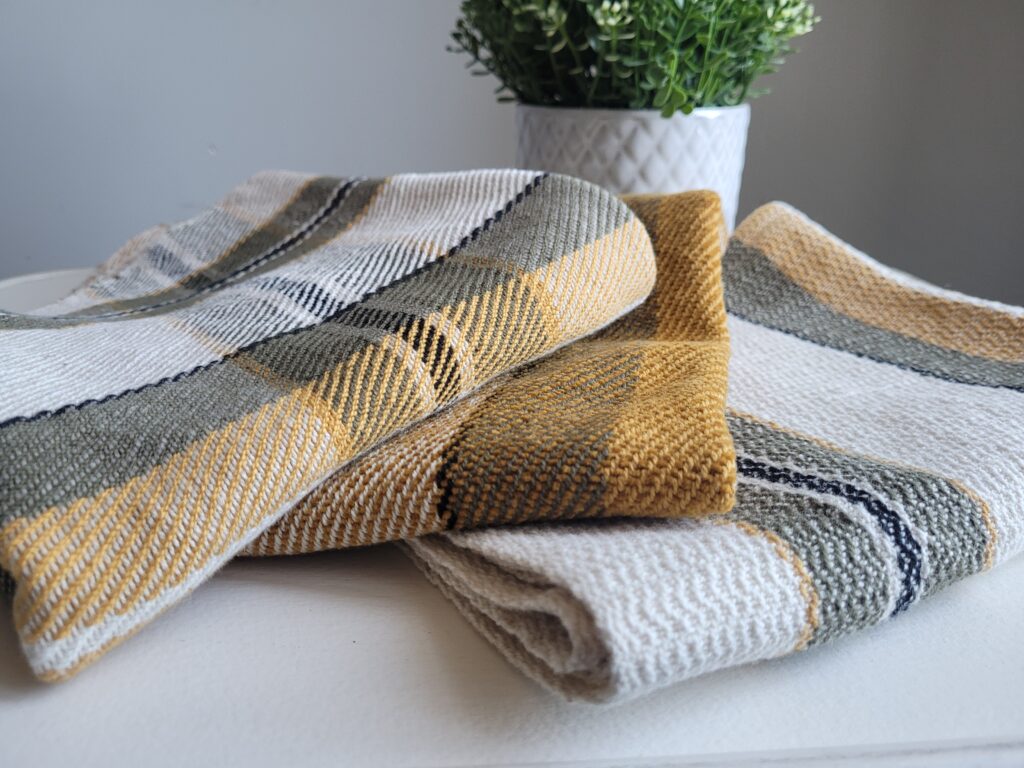First Dishtowels on my Restored Counterbalance Loom
Many months back, I was gifted an old counter balanced loom. When I received it, the loom was all dismantled and it was missing a few pieces. After spending time and effort to restore it to its former glory, I was finally able to weave a small sample on it. Now, it’s time to try and weave a bigger project, namely dishtowels.
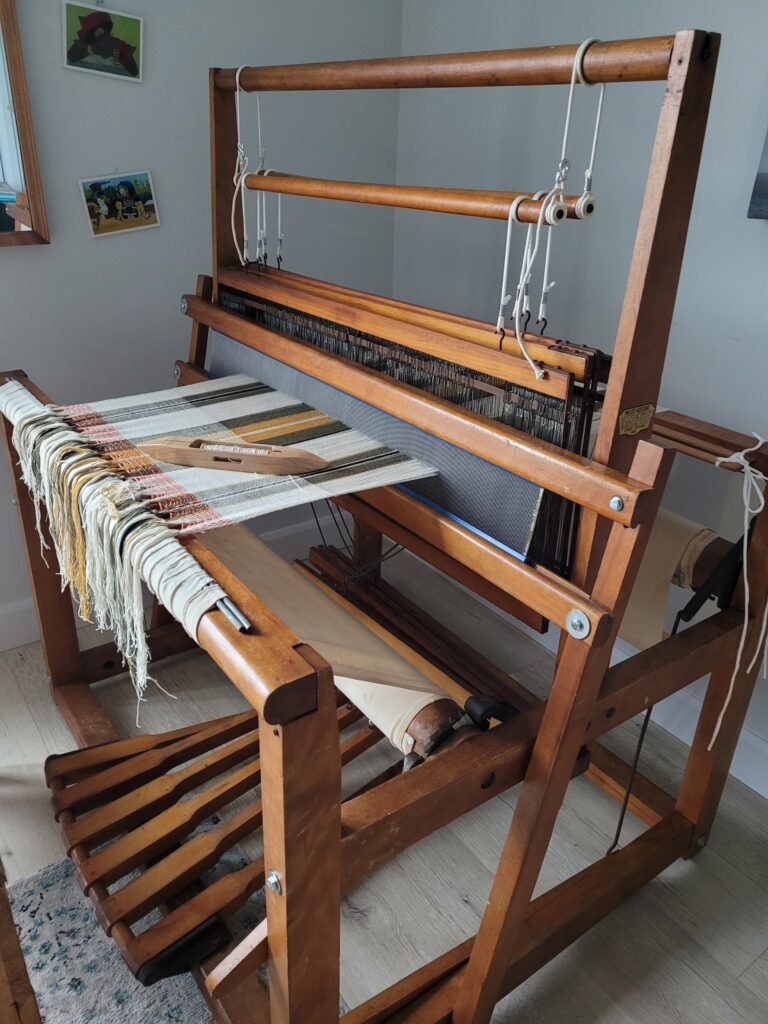
Disclaimer: Links included on this page might be affiliate links. This means that if you purchase a product or service with the links that I provide, I may receive a commission. Please note that there is no additional charge to you. This helps me keep going and create more tutorials
In this video, I talk about the dishtowels project and I also spend some time talking about the loom restoration. On this blogpost, I will mainly focus on the pattern of the first handwoven dishtowels on my restored counterbalance loom. In total, I wove 3 different towels on the same warp. The two first ones are actual dishtowels and the third one is a hand towel.
Warp Yarns
For the warp, I went with a sure value: cotton. I used 8/2 cotton from Maurice Brassard in 4 different colors. I used one spool of each color. ere are the exact color names:
-Naturel-100 (natural color)
-Noir-83 (black)
-Olive-1244 (green olive)
-Viel or-1418 (old gold)
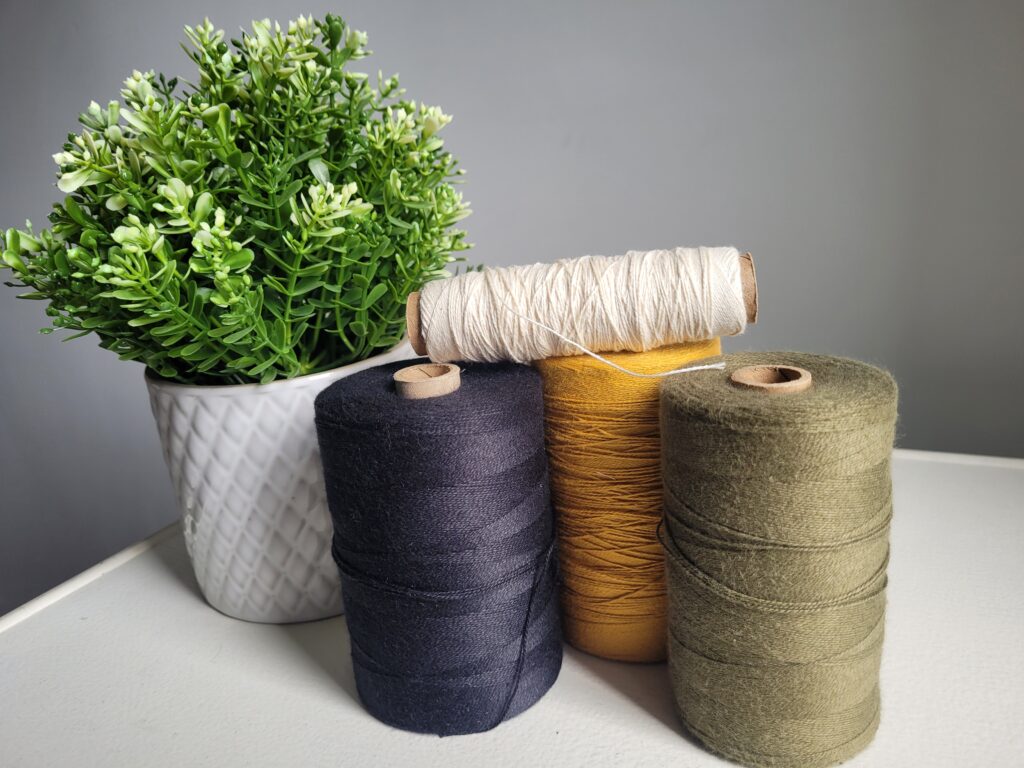
Those yarns are all available through The Woolery’s website: https://woolery.com/maurice-brassard-cotton-yarn-8-2.html?aff=214
Weft Yarns
I used different yarns for each towel.
For the first towel, I only use 8/2 cottolin from Maurice Brassard in the natural color (C100).
For the second, I used cottolin again, but this time in four different colors. In facts, I used the same colors that I found in the warp but in cottolin. One advantage of buying yarns from the same supplier is that I get to have to same colors but in different types of yarns.
Here are the exact names of the colors I used for this second towel:
-Natural-C100 (natural color)
-Noir-C83 (black
-Olive-C1244 (olive green)
-Viel or-C1418 (old gold)

All cottolin yarns are also available on the Woolery’s website. Here’s the link: https://woolery.com/maurice-brassard-cottolin-yarn-8-2.html?aff=214
For the third and final towel, I used cotton chenille is the color “Blé d’Or”-C926 (golden yellow). This yarn allows for a thicker towel. This is why I feel like this towel will be more suitable for a hand towel. Here’s where you can get it: https://woolery.com/maurice-brassard-cotton-chenille-yarn.html?aff=214
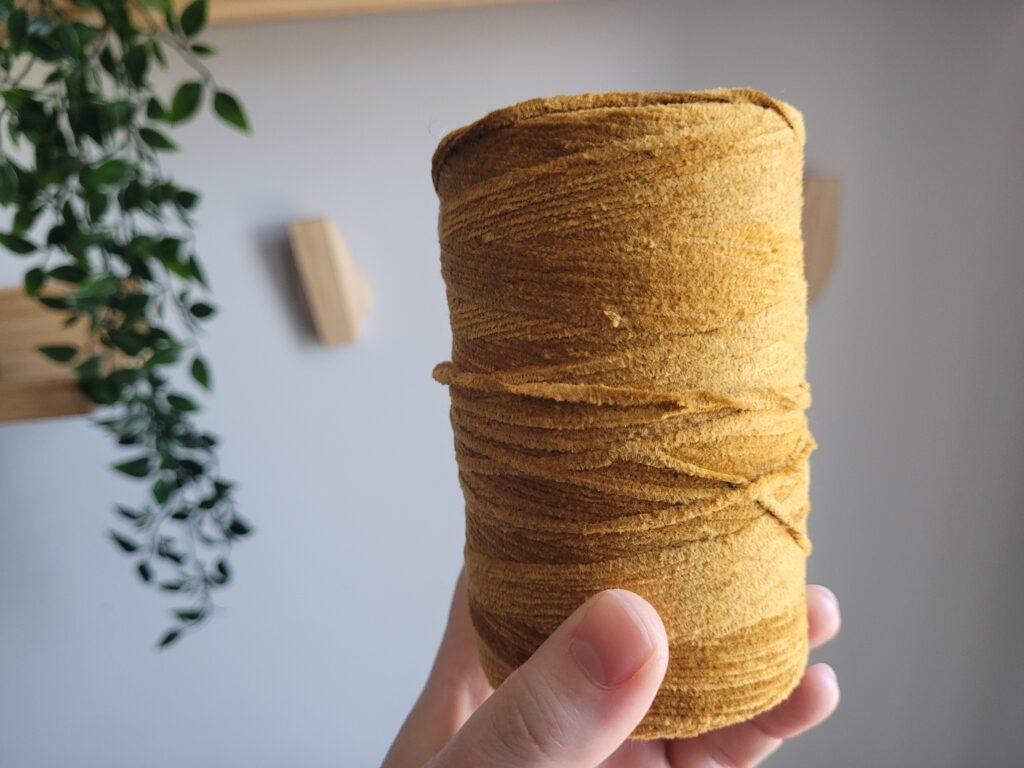
Warp Parameters
I warped a width of 24” (60cm). I used a 12 DPI reed and I doubled the threads in the reed. This means that I had 24 ends per inch (EPI) and a total of 576 ends. I warped for a length of about 4 yards (3m65). However, I did a small mistake while warping, so I had quite a lot of waste at the beginning. I planned to weave 3 towels that would each be 40” long on the loom. In reality, I ended up with 2 towels that were 40” (1m) and the last one was 26” (66cm) on the loom.
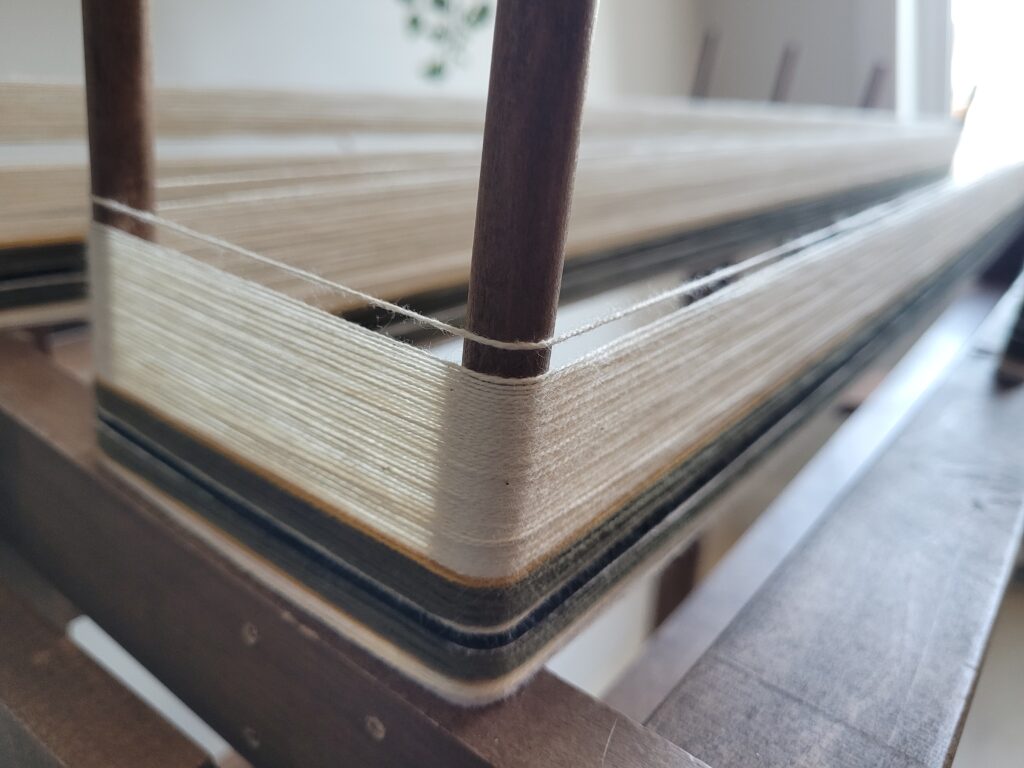
Warp Pattern
For the warp pattern, I played around with different color stripes and width of stripes. I knew that at least one towel will have a plaid effect and I designed the stripes with that in mind. Here’s a picture of the plan:
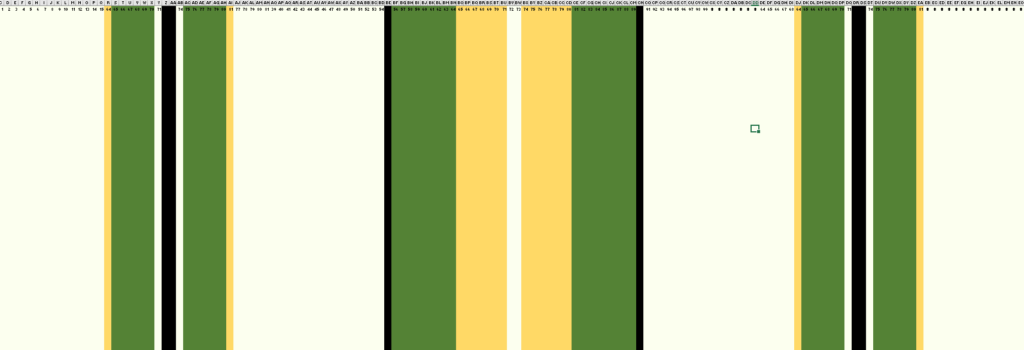
And here’s the exact thread count:

I planned this pattern using a spreadsheet. Learn how I do that here: Planning a Warp Pattern Using a Spreadsheet
Threading
Since that the goal of this project was mainly to test the loom, I kept it simple. Those are after all the first dishtowels on my restored counterbalance loom. In facts, the threading was a simple straight draft, like so:

Tie-up
I did a simple twill tie-up. Here’s how:

Weaving the First Towel
For the first towel, I only wove using one color, namely the natural color of cottolin. This was my treadling:

I wove like that for 40”. Then I wove a bit of scrap yarn and moved on to the second towel.
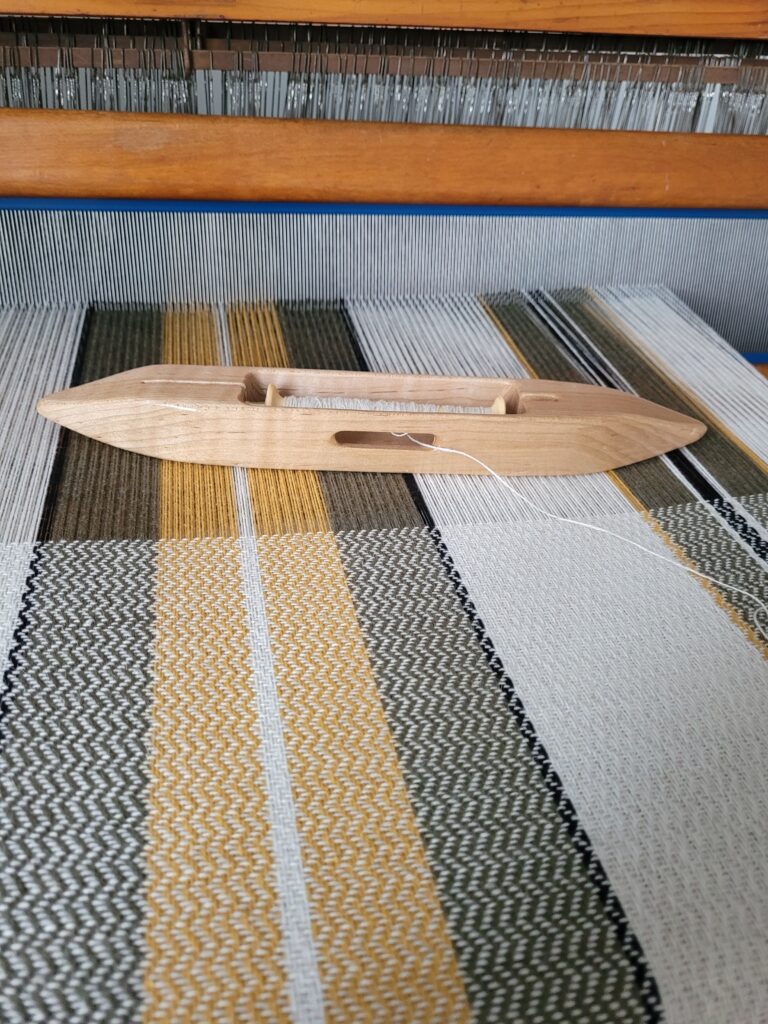
The Second Towel with Plaid
For the second towel, I decided to weave a simple balanced 2/2 twill. This was my treadling:

This is the towel in which I decided to weave plaid. In other words, I tried to replicate what I saw in the warp into the weft. However, I did not plan too much ahead and I wove with the flow. This led me to have a weft pattern not as symmetrical as the warp pattern. Sometimes, I like to simply not follow the plan and see where this leads me. In this case, it led me to an asymmetrical weft pattern. I find that the towel is still pretty with all its perfect imperfections.
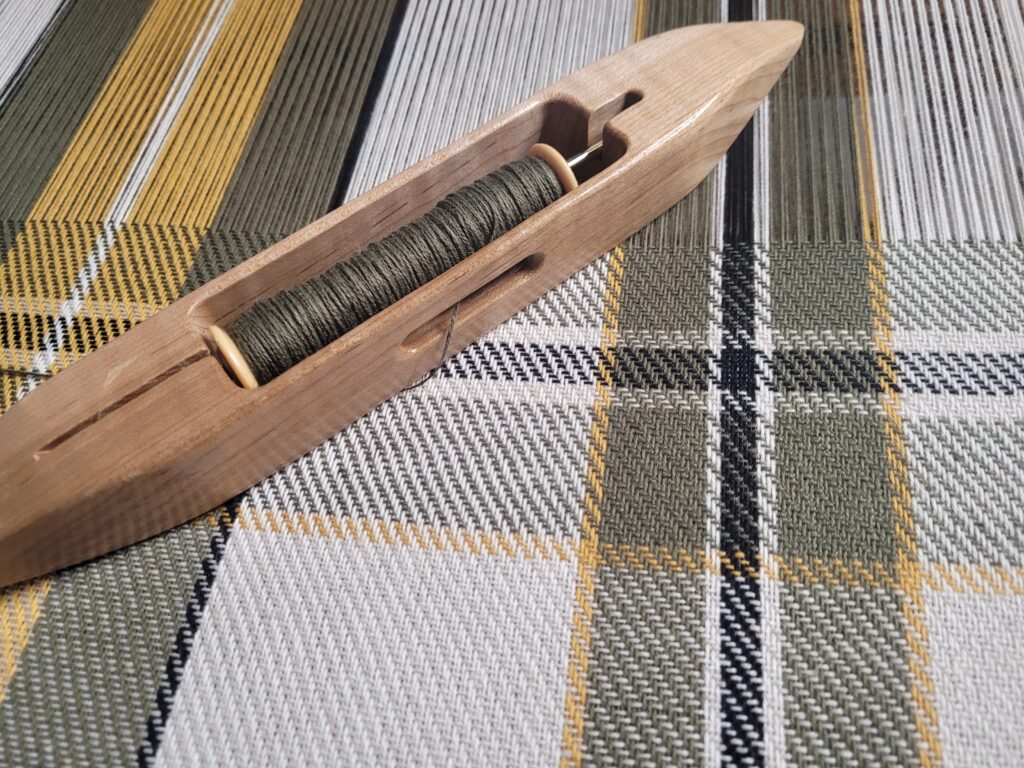
In terms of the pattern, I’ll tell what I did, and then I’ll give you a proposition of something you can do in order to have a more symmetrical pattern. Note that it could also be fun to try many different variations of the pattern too.
Basically, in the warp pattern there are 2 blocks of colors. Two small ones on each side that are identical and a big one in the middle. In between each block of colors, there is some natural color. I will follow the same logic while weaving: alternating between blocks of color and plain weave. Here’s how I wove each block:
The Small Block of Color:
-4 picks golden yellow
-1 ½” olive green
-4 picks natural
-8 picks black
-4 picks natural
-1 ½” olive green
-4 picks golden yellow
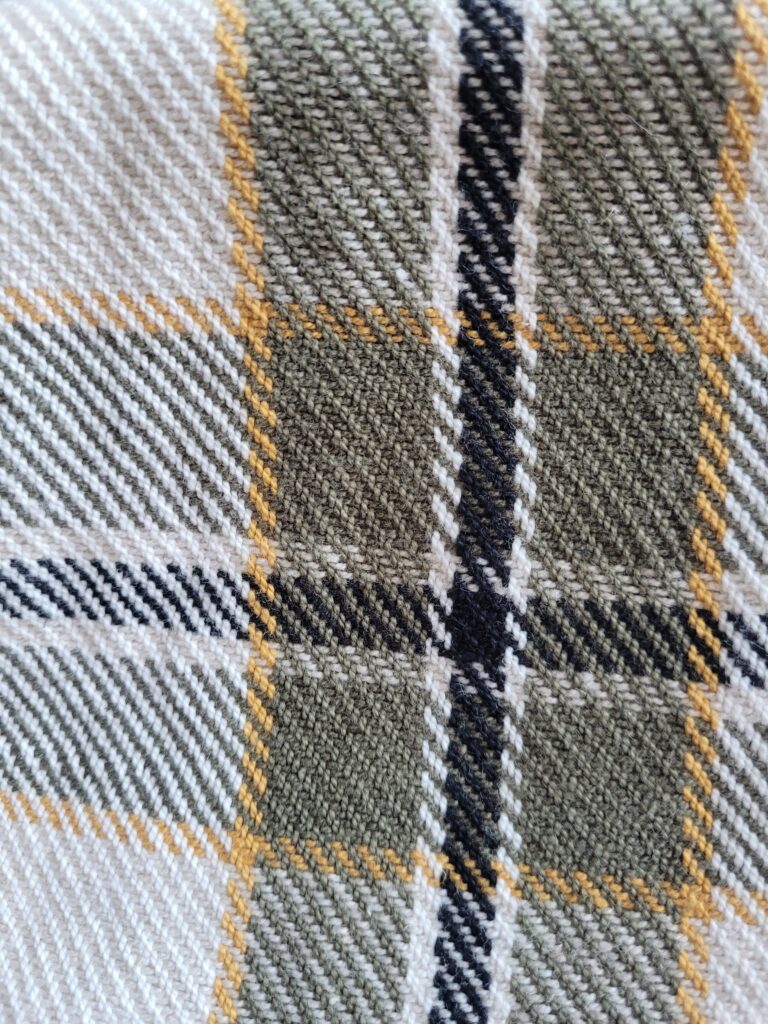
The BIG Block of Color:
-4 picks black
-2” olive green
-1 ¾” golden yellow
-8 picks natural
-1 ¾” golden yellow
-2” olive green
-4 picks black
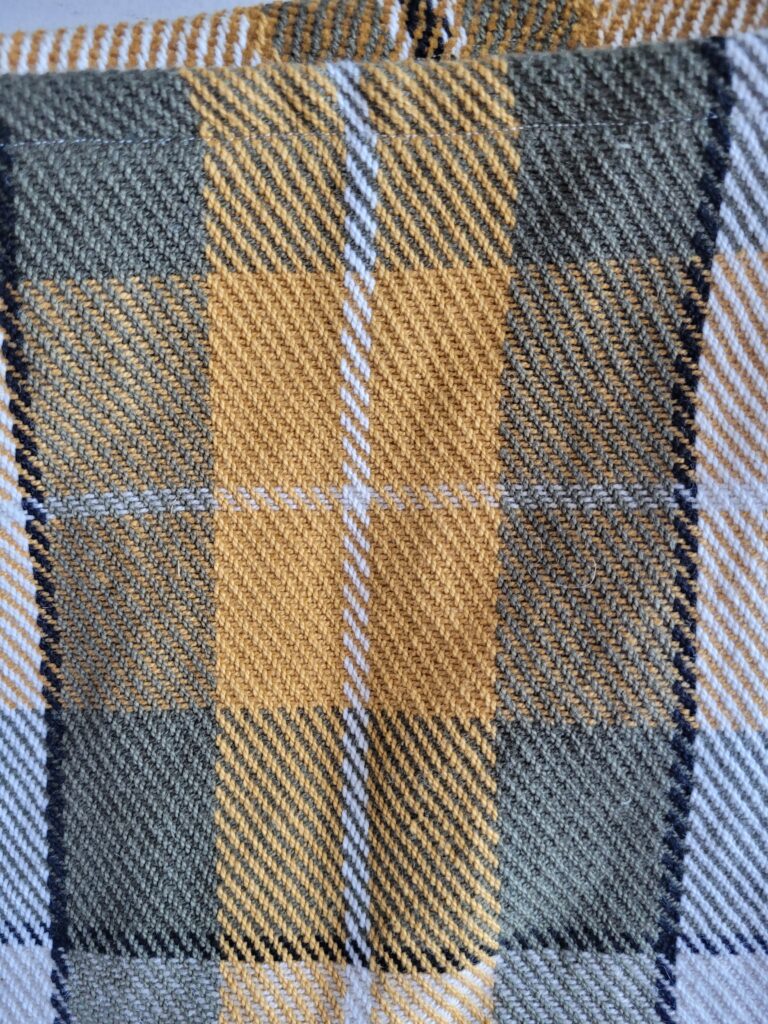
Here’s the sequence that I did:
-2 ½ “ natural
-Small block of color
-4” natural
-Big block of color
-4” natural
-Small block of color
-4” natural
-Big block of color
Then I finished the towel off with about 1” of natural to reach 40”.
Other Option
Here’s what I would do in order to have a more symmetrical pattern. For disclaimer, I have not tried it, but I want to give out the option. Let me know if you ever try it. For reference, I estimate that those were the measure of each block of color:
-4” for the small block of color
-8” for the big block of color
Here’s the proposed pattern:
-7” of natural
-small block of color (4”)
-5” of natural
-Big block of color (8”)
-5” of natural
-small block of color (4”)
-7” of natural
This should give approximately 40” for the towel.
The Third Towel
For the third towel, I did the same treadling as for the second, namely this 2/2 twill:

I wove it using cotton chenille in the color “blé d’or”. The final towel is definitely on the thicker side and it can be a very nice hand towel. At this point, I only had a small portion of warp left and I wove for 26”.
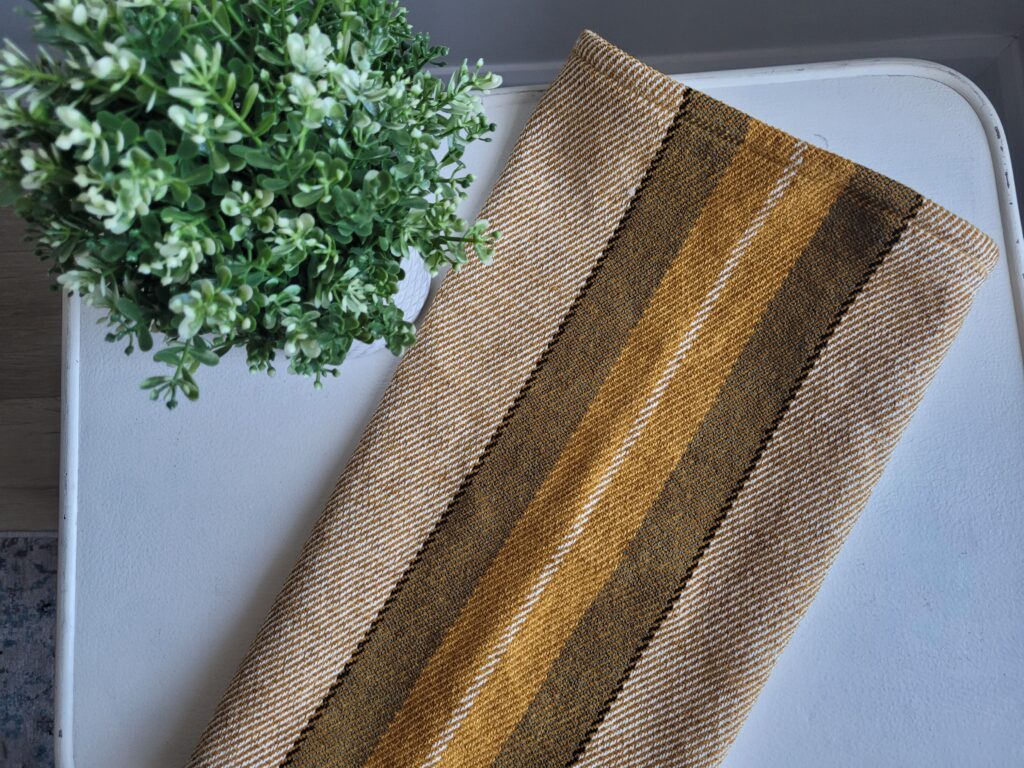
The Final Touches
I wet finished the towels and I hemmed them. After that, their width is 19 ¾” (50cm). Also, the first and the second towels measure 31” (78cm). As for the last one, it’s 18 ½” (47cm) long.
Final Thoughts
This was a simple and very enjoyable project. I’m happy with how the first dishtowels on my restored counterbalance loom turned out. I think that the color way used is what’s giving that towels their beauty. While I was weaving, I did make some discoveries. I found some rusts on the heddles and the beater doesn’t beat straight. With a little more time and TLC, this loom should be weaving like new!
